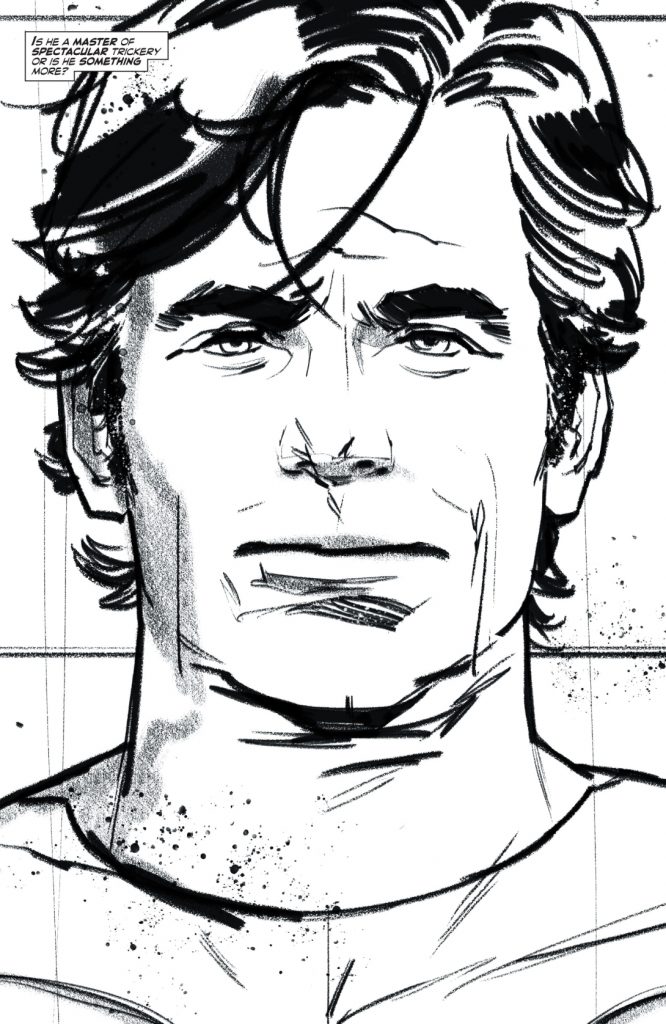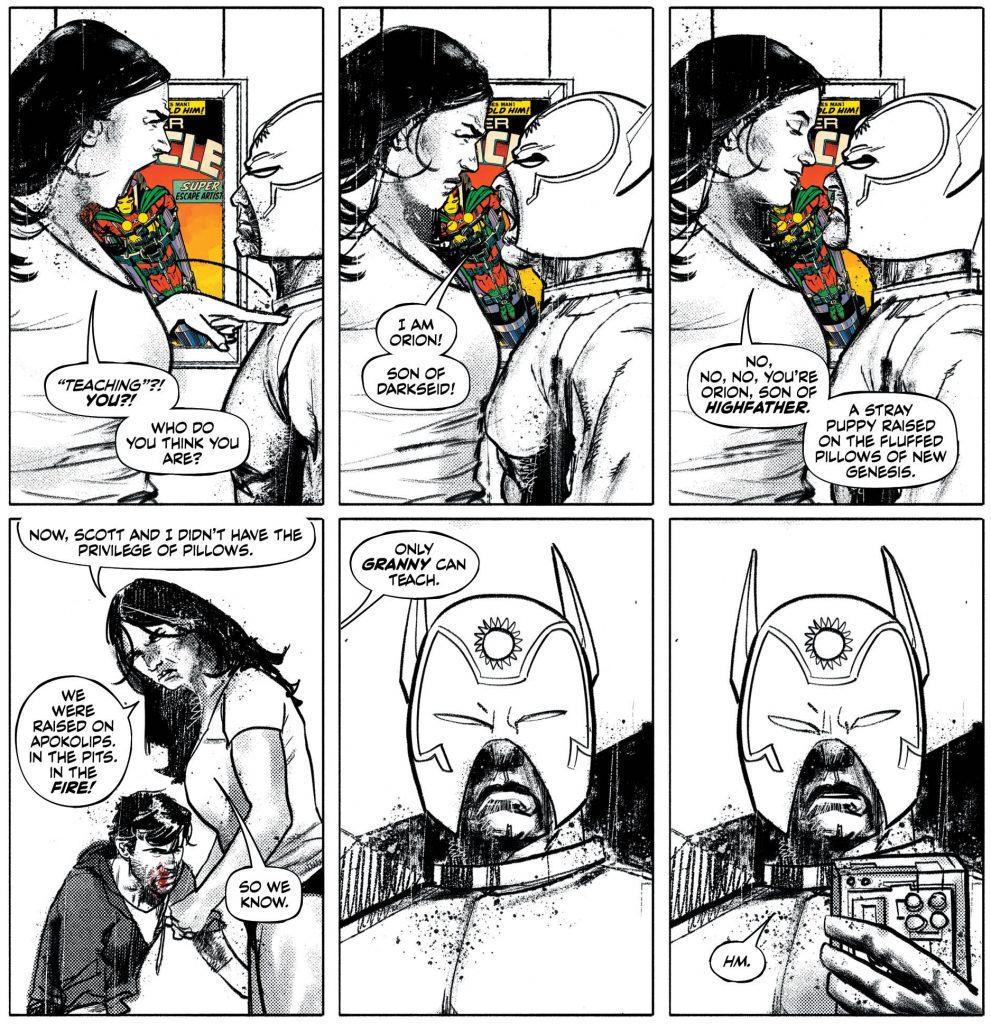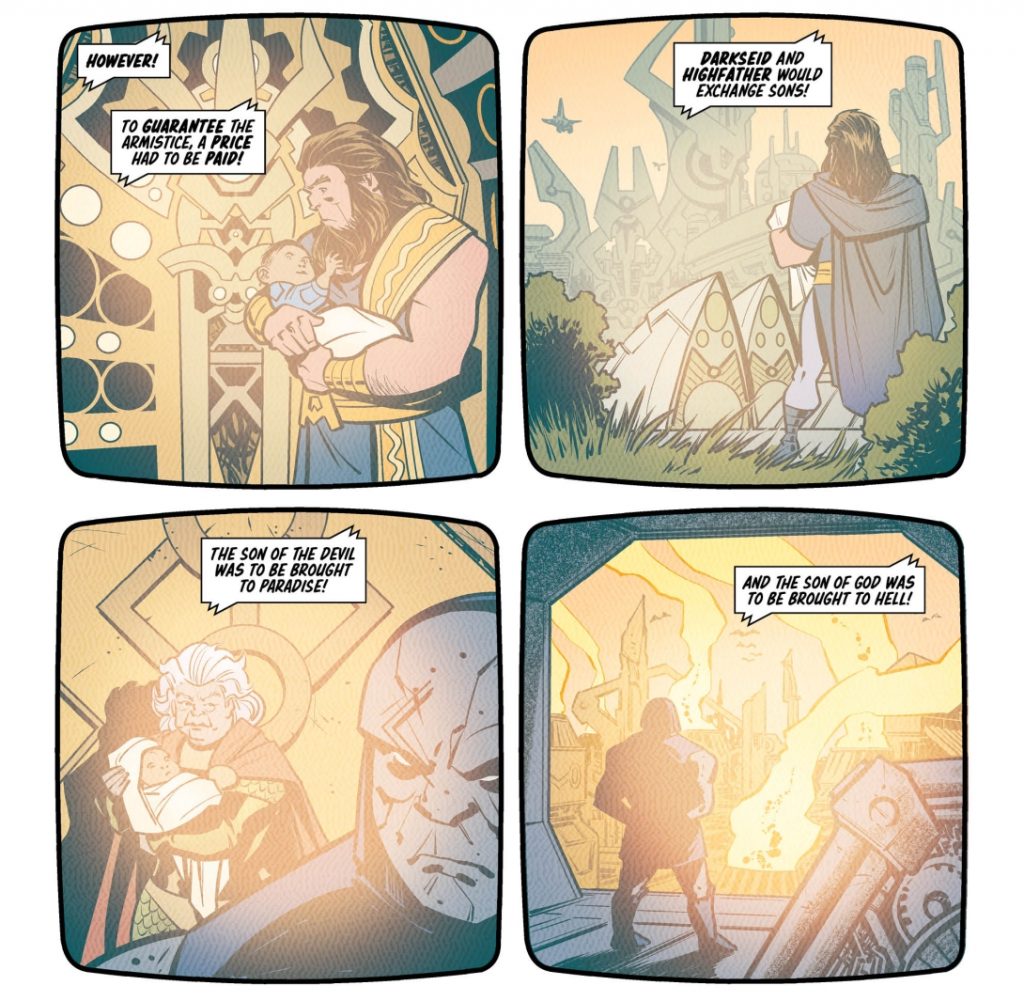[Editor’s Note: This review may contain spoilers.]
Writer: Tom King
Artist: Mitch Gerads, Mike Norton
Reviewed By: Derek McNeil
Summary
We crack open the vaults on MISTER MIRACLE #1 to show you this issue’s original black-and-white artwork by Mitch Gerads and the script by Tom King, providing a peek into the creative process. Plus, King has written a brand-new eight-page story retelling Mister Miracle’s origin, drawn by Mike Norton (MYSTIK U) and available here for the first time! MISTER MIRACLE #1 sold out fast, so you won’t want to miss out on this special edition of one of the most talked-about debuts of the year!

Positives
First off, I should note that the main story in this Director’s Cut edition was already published as Mister Miracle #1, so I will be focusing this review on what is new or different in this edition. Follow this link to read my review of Mister Miracle #1.
The term “Director’s Cut” is a bit of a misnomer in these editions. A director’s cut gives a film’s director a chance to give their preferred version of their movie freed by the constraints that theatrical release has by re-incorporating deleted or alternate scenes or trimming unnecessary footage.
However, in the case of a comic book Director’s Cut such as this, it is more of a dissection of the previously released story, which gives a clearer picture of the individual contributions of the writer and artist. However, there is sometimes some totally new extra thrown in to make it worth buying even if you read the original edition.
The totally new item is an eight page origin story. On the face of it, this story is a faithful retelling of Jack Kirby’s version of Mister Miracle’s origin. The only discrepancy I noticed was that this version states that Granny Goodness gave him the name Scott Free because he had made multiple attempts to escape from her “care”, whereas in Kirby’s original telling of the story, Granny names him immediately upon his arrival on Apokolips as a baby. It could be that King made the change deliberately rather than this being a continuity goof, but the reasoning behind the change isn’t evident at this point in the story.
The Mister Miracle mini-series makes a number of theological references about the divinity of the New Gods. In this story, Highfather is explicitly called God and Darkseid, the Devil. This is rather strong, as DC has always been careful to call the Fourth World characters “gods” with a small “g”. And while the mini-series has implied that the face of God’s is Darkseid’s, this story is calling him the opposite. Quite clearly, King’s story has a theological message that will hopefully clarify as the series progresses.
It is also interesting how this story reinforces the point made in the main story that Orion can be considered the adopted son of Highfather and Scott the adopted son of Darkseid. Perhaps not co-incidentally, it also reminds us of the prophecy that Darkseid will one day be killed by his son. It has generally been assumed that this prophecy refers to Orion, but with no names mentioned, it could just as easily mean Mister Miracle or Kalibak.

Also, it should be noted that the New Gods as they appear in this prologue are very much the traditional Kirby depictions, which is somewhat at odds with their New 52/Rebirth era appearances in the Green Lantern books. It has been stated that the Mister Miracle mini-series is set in the Rebirth continuity, so it seems that DC is rightfully moving back towards Kirby’s original vision of his Fourth World books.
Mike Norton fills in for Mitch Gerads as artist for this short story. Norton’s art seems cleaner and more well defined than Gerads’ art on the main series. I believe that this is a conscious decision, as this makes Scott’s backstory seem more firm and real, whereas Gerad’s artwork gives Scott’s current day-to-day life a feeling of unreality and wrongness.
Also, this definition disappears on the last page as the story catches up with Scott’s present and the picture distorts then fades out completely, leaving us with the disturbing sentence “Darkseid is” – which is frequently repeated throughout the mini.
This edition also includes the uncoloured artwork from Mister Miracle #1 and the script. While neither can completely divorce Tom King’s writing from Mitch Gerad’s artwork, each is able to focus on the contribution of the two creators. Also, it gives a clearer view of how the two work off each other to produce the final version. These sections of the issue are more like a pair of “behind-the-scenes” features than a true director’s cut.
Negatives
The main question with a Director’s Cut edition like this, is whether it is worth the extra expense to buy what it mostly a story you already have read – especially considering that it carries a higher cover price than the earlier edition. If you have no interest in having a look at the script or uncoloured art, then unfortunately, I think it’s hard to justify buying it on the merits of the eight new pages alone, as good as they are.

Verdict
If you enjoy these Director’s Cut editions, they you’ll definitely want to get this one. It is the best one DC has done so far and Mister Miracle is an exceptional series that is definitely deserving of the Director’s Cut treatment. However, if they don’t interest you, then you might want to skip this, unless you are a devoted Mister Miracle fan and really want that new eight page origin story.
